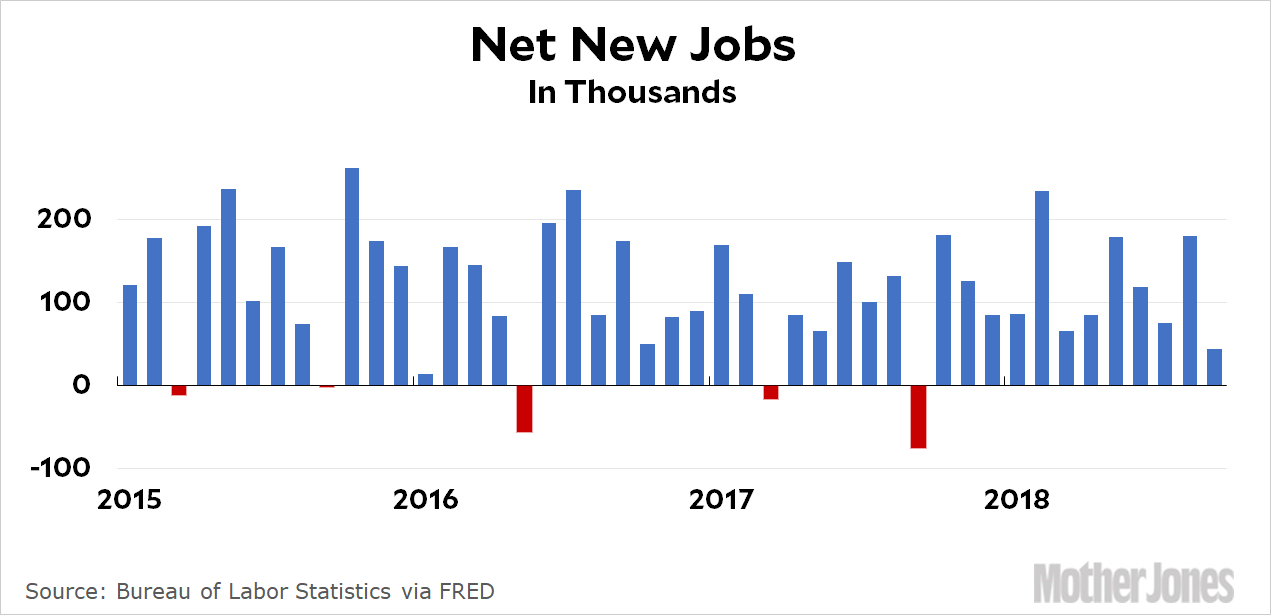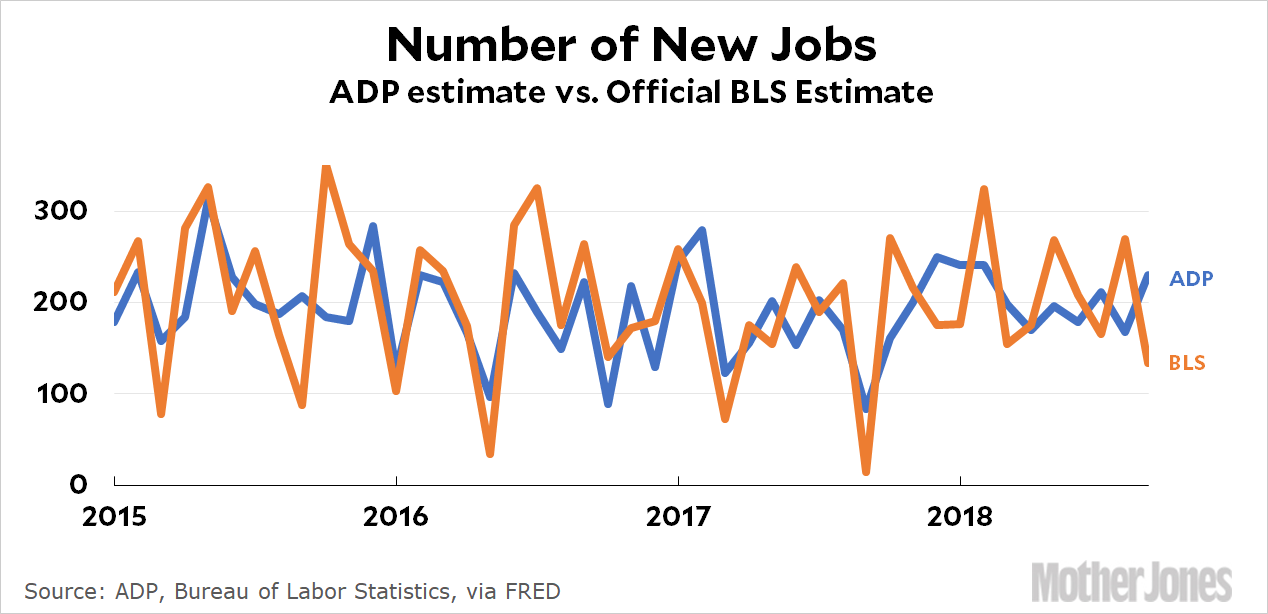The American economy gained 134,000 jobs last month. We need 90,000 new jobs just to keep up with population growth, which means that net job growth clocked in at a miserable 44,000 jobs. The unemployment rate dropped to 3.7 percent, which was a little odd. The number of new jobs really was low, but the number of unemployed dropped by a respectable 270,000. But where did their jobs come from?
- The civilian labor force increased by 150,000 but 420,000 people found new jobs.
- New jobs increased by 134,000 and the unemployed found 270,000 jobs. This adds up to 404,000 newly employed
These numbers add up pretty closely, but what jobs did the unemployed find? Old ones? Unreported ones? Part time occasional jobs? I’m not clear about that. However, the employment-population ratio ticked up from 60.3 percent to 60.4 percent, so there were definitely more people working in the market labor force than before.
Wages of production and nonsupervisory workers were up at an annualized rate of 3.3 percent. The annualized rate of inflation right now is 2.7 percent, which means that blue-collar workers increased their real wages by 0.6 percent, which is so-so. Taking everything together, this wasn’t the worst jobs report ever, but it was still a pretty mediocre one, and well under expectations.

POSTSCRIPT: President Trump is very fond of tweeting out the early job estimates from ADP, which bases its estimate on a survey of about 20 percent of all private US employees.
Blowout numbers on New Jobs and, separately, Services. Market up!
— Donald J. Trump (@realDonaldTrump) October 3, 2018
This got me curious: how closely do the ADP estimates track the BLS estimates: Here’s the chart:

There’s a ton of noise here, and the September numbers diverged considerably. ADP predicted 230,000 new jobs while the BLS estimated only 134,000 new jobs. This kind of noise is invevitable when you survey with two very different instruments, and it’s impossible to say which is more accurate. Over the long term they agree pretty closely, and ADP claims that their goal is to match the final revision of the BLS numbers, not the first print. If that’s really the case, then in a couple of months the BLS will revise its September number up to around 230,000. Wait and see.
In any case, Wall Street traders generally take the ADP numbers as gold, and if the BLS numbers come in lower then the economy has come in “below expectations.”













